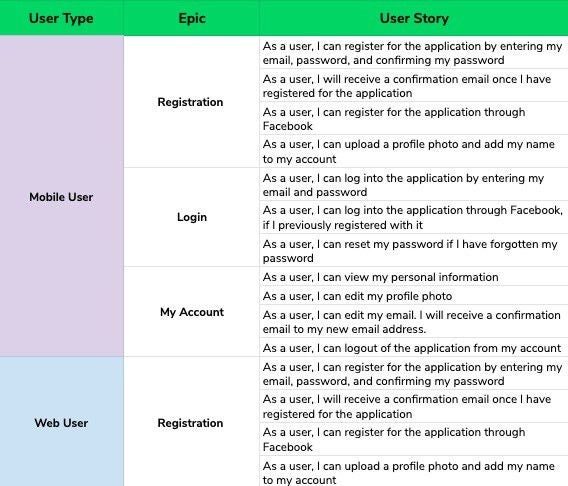There are four steps to creating good user stories. These steps require the collaboration of the client and the business analyst on the project:
1. Validate the needs of the users
The client first must clearly define the users who will use the application. It is very important to know the user, their pain points, needs and goals. You should typically have a solid understanding of your users, but no matter how well you think you know them, there is no substitution for performing market research and interviewing potentials users, both before and during the discovery phase.
Because this is so integral to the process at EY Design Studio, we offer market research as a service and will often encourage our clients to collaborate with us for this. The business analysts work with UX researchers to deliver focus groups, perform interviews and compile other findings to create data-driven user experience maps and user personas.
2. Create epics
Epics can be described as a major component of the application. They are generally drafted before user stories are written to map out the bigger components, but are also further defined as more user stories are identified. User stories are then grouped into these epics. Organizing user stories into epics is useful for planning what features developers will build and in what order, and it can give a high-level understanding of the features of the application.
An example would be creating a “login” epic, and having all user stories related to login under that epic, such as:
- As a user, I want to login so I can access the application.
- As a user, I want to login with my Facebook account so that I can login more quickly.
3. Writing user stories
After the users and the epics have been defined, the business analyst on the project will begin drafting user stories. Epics can be added and removed as different components are identified. This step can also be done collaboratively with clients if they are interested in contributing.
User stories typically follow a simple template that captures the user, and the user’s goal , in a simple and non-technical format.
As a < type of user/role >, I want < some goal > so that < some reason/benefit >.







